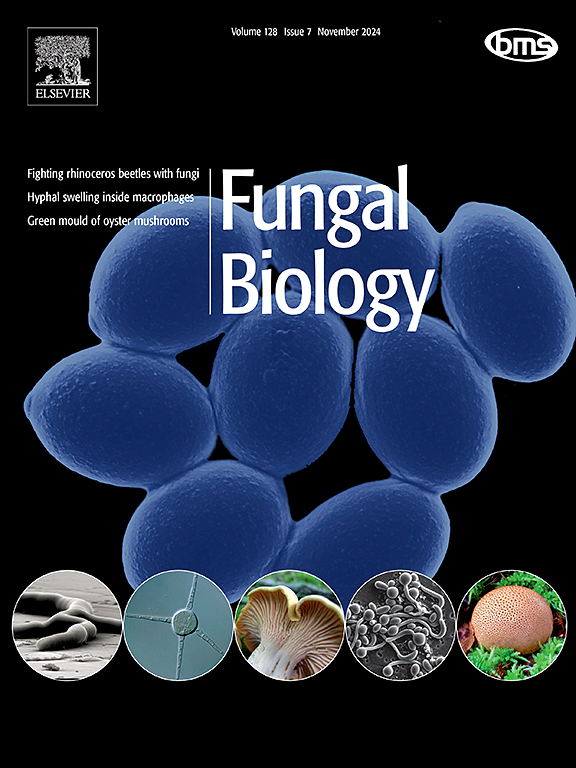双孢蘑菇通过不同基质层的外质体和共质体途径提供水分
IF 3
3区 生物学
Q2 MYCOLOGY
引用次数: 0
摘要
双孢蘑菇是在堆肥上种植的,上面覆盖着一层泥炭基的外壳。水从堆肥和外壳中转移,使蘑菇形成。在这里,研究了从外壳和堆肥的不同部分到蘑菇的水分转运,并将其与它们的水势及其影响因素联系起来:即渗透和基质势。蘑菇中的水分主要来源于堆肥的外壳,少量来源于堆肥的顶层和中层。基于这些结果,测试了替代套管方案以增加蘑菇产量。当在旧套管上覆盖一层新套管或在收获第二次冲洗后更换套管时,总产量可提高1.4倍。数据表明,水势的差异可以驱动从套管到第一次冲洗的被动水迁移,而不消耗细胞能量。然而,在第二次冲洗时,在套管和蘑菇之间没有建立这样的水势梯度,但蘑菇仍然发育。堆肥中的水势表明,水分根本无法转移到蘑菇中。因此,水势的其他分量应该驱动水流。我们有迹象表明这个成分是菌丝的膨胀。此外,我们还发现了一种新的水分通过外质体从肠衣转运到蘑菇的途径。本文章由计算机程序翻译,如有差异,请以英文原文为准。
Agaricus bisporus mushrooms are supplied with water through both apoplastic as well as symplastic routes from distinct substrate layers
Agaricus bisporus is grown commercially on compost topped with a peat-based casing layer. Water is translocated from compost and casing to enable formation of mushrooms. Here, water translocation from casing and different parts of the compost into mushrooms was studied and linked to their water potential and contributing factors thereof: i.e. osmotic- and matric potentials. Water in the mushrooms mainly originated from the casing and to a lesser extent from the top and middle layers of the compost. Based on these results, alternative casing regimes were tested to increase mushroom production. This resulted in a total yield increase of up to 1.4-fold when the old casing was topped with a fresh layer of casing or when the casing was replaced after harvesting the second flush. Data indicate that the difference in water potential can drive passive water translocation from the casing to the first flush, without expending cellular energy. However during the second flush, no such water potential gradient is established between casing and the mushrooms, yet mushrooms still develop. The water potential in the compost indicates that water cannot be translocated to the mushrooms at all. Therefore, other components of the water potential should drive this water flow. We have indications that this component is the turgor of the mycelium. Moreover, we found a novel route of water translocation from casing to mushrooms via the apoplast.
求助全文
通过发布文献求助,成功后即可免费获取论文全文。
去求助
来源期刊

Fungal biology
MYCOLOGY-
CiteScore
5.80
自引率
4.00%
发文量
80
审稿时长
49 days
期刊介绍:
Fungal Biology publishes original contributions in all fields of basic and applied research involving fungi and fungus-like organisms (including oomycetes and slime moulds). Areas of investigation include biodeterioration, biotechnology, cell and developmental biology, ecology, evolution, genetics, geomycology, medical mycology, mutualistic interactions (including lichens and mycorrhizas), physiology, plant pathology, secondary metabolites, and taxonomy and systematics. Submissions on experimental methods are also welcomed. Priority is given to contributions likely to be of interest to a wide international audience.
 求助内容:
求助内容: 应助结果提醒方式:
应助结果提醒方式:


